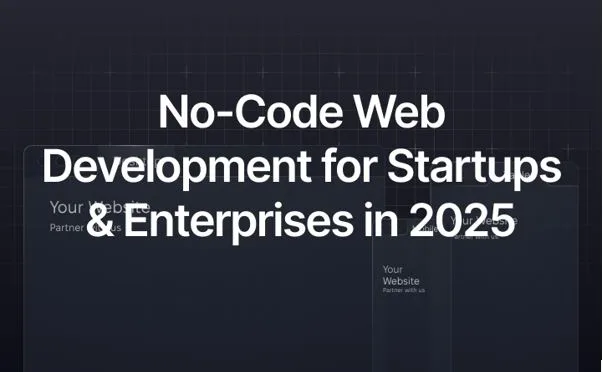Fleet Vehicle Tracking Explained: Benefits, Costs, and Best Practices
If you operate service, delivery, construction, or field-sales vehicles, you’ve probably heard the term fleet vehicle tracking. But what exactly is it, what does it cost, and how do you roll it out without overwhelming your team? This guide breaks down the essentials—how the technology works, the business benefits you can expect, realistic cost models, and proven best practices from successful fleets.
What is fleet vehicle tracking?
Fleet vehicle tracking is the use of GPS- and sensor-enabled devices (often called telematics) installed in vehicles to collect and transmit data such as real-time location, speed, engine diagnostics, fuel use, driver behavior, and more. A cloud platform ingests that data and turns it into maps, alerts, dashboards, and reports your team can act on.
Modern systems combine:
- Hardware: Plug-and-play OBD-II devices, hardwired units, or OEM-embedded telematics.
- Connectivity: Cellular or satellite links (with store-and-forward when out of coverage).
- Software: Web and mobile apps for dispatchers, managers, and drivers.
- Integrations: Connections to maintenance tools, payroll, CRM/ERP, and safety cams.
How it works (in plain English)
- A device in the vehicle captures GPS position every few seconds and reads engine data (RPM, DTC codes, coolant temp, fuel level where supported).
- Data is transmitted to the cloud, usually in near real time.
- The platform processes events—arrivals, departures, idling, speeding, harsh events—and matches them to your geofences, routes, and customer locations.
- You act on insights via live maps, ETAs, automated alerts, scheduled reports, and APIs that feed other systems.
Key benefits you can bank on
1) Better visibility and on-time performance
See where vehicles are right now, which jobs are complete, and who’s closest to the next call. Share real-time ETAs with customers to cut “where’s my driver?” calls and improve first-time resolution.
2) Fuel and idle reduction
Telematics reveals high-idling vehicles, inefficient routes, and speeding that burns fuel. Small changes—like auto-alerts when idle exceeds 5–10 minutes—can shave 5–15% off fuel costs across a fleet.
3) Safety and risk management
Track harsh braking, rapid acceleration, cornering, and speeding. Set coaching thresholds, run monthly scorecards, and pair with forward or driver-facing cameras if appropriate. Safer driving lowers incident rates and can support insurance discussions.
4) Proactive maintenance
Use engine hours, mileage, and actual usage to schedule PMs instead of relying on paper logs. Get alerts for diagnostic trouble codes (DTCs) to fix issues before they become roadside breakdowns.
5) Theft deterrence and asset recovery
Geofence alerts trigger if a vehicle moves outside working hours. Stolen vehicles are located faster, limiting losses and downtime.
6) Compliance and documentation
Depending on your operation and region, fleet vehicle tracking can support duty-of-care, proof of service, hours and mileage logs, and tax or sustainability reporting.
7) Sustainability and CSR
By reducing idling and optimizing routes, you cut emissions. Many systems provide per-vehicle emissions estimates to include in ESG reporting.
Costs: what to expect (and how to model ROI)
Every provider prices differently, but most total cost of ownership (TCO) falls into a few buckets:
- Hardware: Plug-in OBD-II units, hardwired units, or OEM-embedded options. Some vendors lease hardware; others sell it outright.
- Monthly service (per vehicle): Access to the platform, data plan, maps, storage, and support. Add-ons like dashcams, driver ID, or AI safety features may add per-vehicle fees.
- Installation: Plug-and-play units can be self-installed in minutes; hardwired or camera systems often need professional installation.
- Change management: Training time for dispatchers, managers, and drivers; process updates; communication materials.
Rather than chase headline prices, build a simple ROI model:
Annual savings = (Fuel savings) + (Maintenance savings) + (Insurance/incident reduction) + (Labor/time savings) + (Recovery/asset loss avoidance)
Annual cost = (Hardware amortization) + (Monthly service × 12 × vehicles) + (Install/training)
Net ROI = (Annual savings − Annual cost) ÷ Annual cost
Quick levers to plug in your numbers:
- Fuel: (Fleet gallons per year × expected % reduction from idling/routing).
- Maintenance: (Average PM/repair spend × % avoided via proactive scheduling).
- Incidents/Insurance: (Historical incident cost × expected % reduction).
- Labor/Time: (Dispatcher and driver hours saved per week × fully loaded rates).
- Recovery: (Probability of theft × typical loss avoided with rapid recovery).
Even conservative assumptions often justify the investment within months.
Choosing a fleet vehicle tracking system
Use this checklist to filter vendors quickly:
- Core feature fit: Live location, geofences, idling, speed, driver behavior, maintenance scheduling, customizable alerts, robust reporting.
- Hardware options: Plug-and-play vs. hardwired; compatibility with light-, medium-, and heavy-duty vehicles; EV support (state of charge, charging events).
- Cameras and safety: If you need dashcams, look for AI event detection, video retrieval speed, and clear privacy controls.
- Integrations: Maintenance software, payroll/HR, CRM/ERP, dispatch/route optimization, and data export via API.
- Mobile experience: Usable driver app (if needed) and manager app for after-hours visibility.
- Scalability and reliability: Uptime guarantees, data retention, device warranty, and support SLAs.
- Data governance: Role-based access, audit logs, encryption, data residency if required.
- Pricing clarity: Transparent per-vehicle fees, add-ons, installation, and contract terms.
Best practices for a smooth rollout
Start with clear goals and KPIs
Pick 3–5 measurable outcomes tied to business value. Examples:
- Idle minutes per 100 miles
- Speeding events per 1,000 miles
- On-time arrival rate
- Unplanned maintenance incidents per vehicle per quarter
- Fuel cost per mile
Secure driver buy-in early
Communicate the “why”: safety, fewer breakdowns, less paperwork, and better customer ETAs—not micromanagement. Share a written policy that covers:
- What data is collected
- How it’s used (and not used)
- Retention periods
- Driver coaching approach
- Privacy considerations (e.g., no tracking during off-duty use if vehicles go home)
Run a pilot before scaling
Select 10–20% of your fleet across diverse routes, vehicle types, and driver profiles. Pilot for 30–60 days, measure KPIs, gather feedback, and refine alert thresholds and reports.
Tune alerts to reduce noise
Start with high-value alerts (excessive idling, speeding > X mph over limit, unauthorized after-hours movement). Set escalation paths. Review weekly; if an alert triggers too often without action, adjust it.
Integrate maintenance workflows
Connect telematics mileage/hours to your maintenance system. Auto-create PM work orders and capture DTCs. Share a simple service calendar so operations knows when vehicles will be down.
Automate the boring stuff
Schedule weekly reports to managers (e.g., top/bottom driver safety scores, vehicles due for PM) and monthly executive summaries with KPI trends.
Protect data and ensure compliance
Implement role-based access, multifactor authentication, and audit logs. Align with local laws and union agreements if applicable. Document consent where required.
Train continuously
Offer short, role-specific training for dispatchers, managers, and drivers. Reinforce safety coaching with positive recognition, not just penalties.
Implementation roadmap (typical)
- Week 1–2: Vendor selection, goal setting, device order, policy draft.
- Week 3–4: Pilot install, baseline measurement, initial training.
- Week 5–6: Alert/report tuning, maintenance integration, early wins broadcast.
- Week 7–10: Fleet-wide install, executive dashboard live, driver coaching cadence.
- Ongoing: Quarterly reviews, optimization, device health checks.
Common pitfalls (and how to avoid them)
- Too many alerts on day one: Start small; expand as you see actionability.
- No driver communication: Share the purpose, benefits, and privacy boundaries up front.
- Ignoring data hygiene: Validate VINs, odometer readings, time zones, and geofences early.
- Underutilized features: Schedule refresher training and nominate “super users.”
- No link to business outcomes: Tie dashboards to KPIs executives care about—on-time rate, cost per mile, safety incidents.
FAQ: quick answers leaders ask
Is fleet vehicle tracking accurate?
GPS accuracy is typically within a few meters, sufficient for dispatch, ETAs, and geofencing. Tunnel, garage, or dense urban environments can temporarily reduce precision; store-and-forward fills gaps.
Does it work when vehicles go out of coverage?
Yes. Devices buffer data and upload once connectivity returns. Satellite options exist for remote regions if needed.
What about electric vehicles?
Most modern platforms support EVs, including state-of-charge, charging events, and energy consumption—helpful for route planning and charger utilization.
Do I need driver consent?
Requirements vary by region and policy. As a best practice, inform drivers in writing, explain what’s tracked and why, and obtain acknowledgement where required.
How soon will we see results?
Fleets often see quick wins (idle reduction, faster dispatch) within weeks; broader safety and maintenance gains accrue over 1–3 months as coaching and PM schedules take hold.
Bringing it all together
Fleet vehicle tracking isn’t just dots on a map—it’s a continuous improvement system for safety, service, and cost. Start with clear goals, run a focused pilot, communicate openly with drivers, and integrate maintenance and reporting from day one. With a tuned alert strategy and a few meaningful KPIs, you’ll cut waste, protect people and assets, and deliver consistently better customer experiences.







